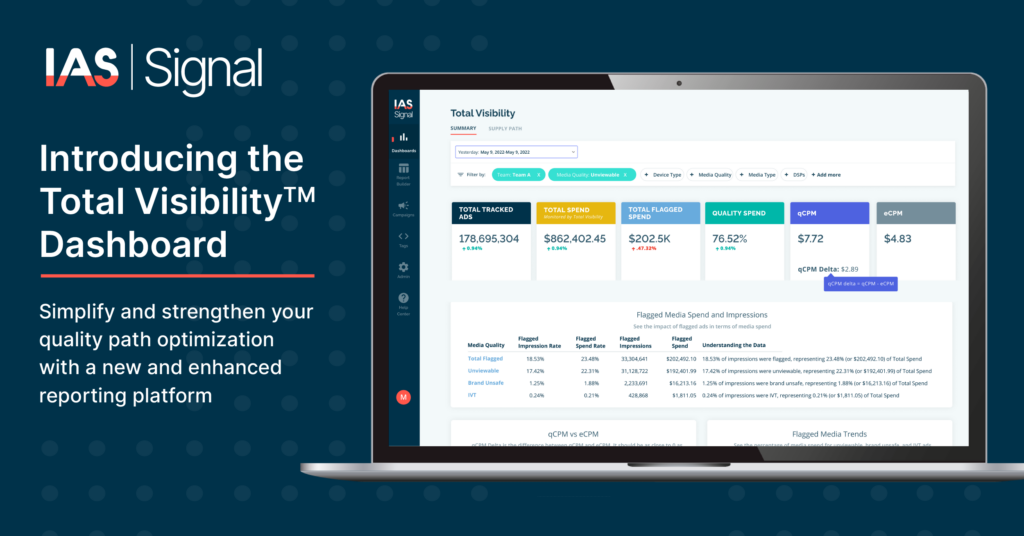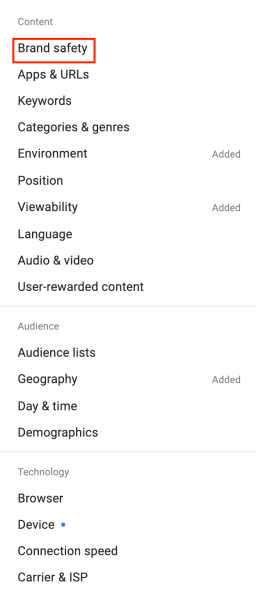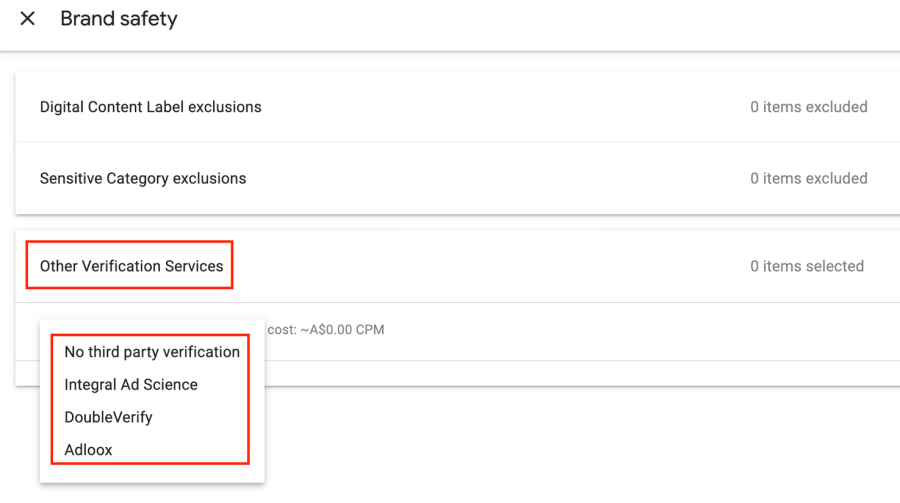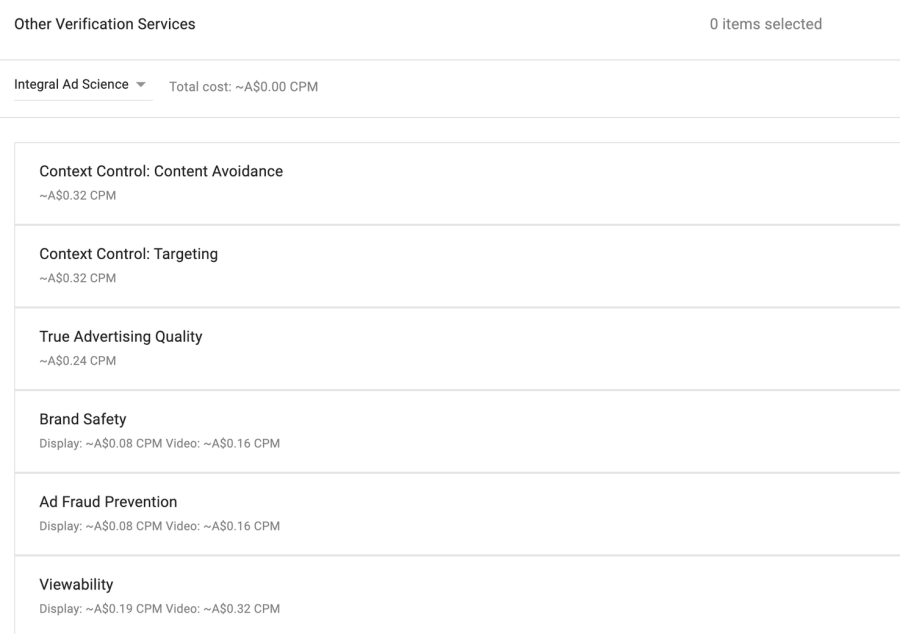12 December 2023
Keep your brand safe! Use 3P verification vendors

In summary
- On top of existing DSP brand safety features, third-party verification vendors can provide an additional layer of protection to your brand image and reputation
- Tools and solutions that enhance brand safety, measure inventory quality and prevent ad fraud are available which can help reduce media wastage
- Some 3P verification vendors are readily available for use in DV360 whilst others require advertisers to reach out in order to implement it to their desired DSP
What are third-party verification vendors?
Third-party verification vendors are external parties that provide tools and solutions to ensure media quality remains high. Their tools help enhance brand safety, evaluate inventory quality and prevent ad fraud. These solutions can be applied on top of existing DSP brand safety features and inventory quality technologies to provide an additional layer of protection to your brand and ensure your media resources are used efficiently. However, one thing to note is that the usage of 3P verification vendors will require an additional cost to your media spend.
What is brand safety?
Brand safety involves identifying and implementing practices and measures to protect a brand image and reputation. This consists of preventing your ads from serving on undesired sites and apps that may have poor or questionable content that can potentially leave a negative impression of your brand. Each brand will have different brand safety requirements in which 3P verification vendors can help tailor their solutions to, such as contextual targeting and pre- and post-bid filters.
What are pre and post-bid filters?
Pre-bid filters or verifications occur prior to an ad running on a page. The verification process occurs whilst a bid is placed for a placement and involves a third party examining a page based on pre-determined rules that were set by the advertiser. Most available verification solutions are pre-bid such as content category exclusions.
Post-bid filters occur after an impression has been won. Advertisers will still need to pay for this impression, however, your ad may not necessarily be served if the site/app fall within the pre-determined rules for post-bid blocking. Post-bid filters can protect advertisers from ad fraud such as domain spoofing.
If both pre and post-bid filters are applied and are aligned with the set parameters, your ad will be blocked from serving.
What is inventory quality?
Inventory quality is a measurement of inventory performance which involves a number of factors. This can include but is not limited to:
- Viewability - can your ad be seen?
- Positioning - is your ad at the top or bottom of a page?
It is extremely important to frequently evaluate the quality of your inventory and media delivery to reduce media wastage such as delivering impressions to sites/apps that are unlikely to be seen by users. 3P verification vendors provide tools to measure viewability to help with optimisations.
What is ad fraud?
Ad fraud is the fraudulent representation of impression, click or conversion delivery and can appear in many forms. 3P verification vendors actively use technology to identify new forms of ad fraud and which sites and apps are performing fraudulent activity. With pre- and post-bid filters, advertisers can reduce the number of impressions being served to such sites and ensure the majority of their media budget is spent on effective ad placements. The following are some forms of ad fraud.
Domain spoofing
Domain spoofing involves a hacker appearing to utilise a domain, impersonating a company/individual in order to perform a scam or retrieve data.
Ad stacking
Ad stacking consists of ad placements placed on top of each other where impressions are still served, however, only the top ad is physically seen. As a result, advertisers will still be charged for that impression despite users not being able to view the ad.
Click bots
Click bots are programmed bots used to increase clicks and the click-through-rate (CTR) of your ad/s. As a result, this will feed through an inaccurate report of certain metrics.
Examples of 3P verification vendors
The following are some major 3P verification vendors that can be used within major DSPs and social media platforms.
- IAS (Integral Ad Science)
- DoubleVerify
- MOAT Oracle
- Adloox
All of the above provide products surrounding ad fraud, brand safety, contextual targeting or exclusions and viewability across a number of channels and devices including display, video, desktop and CTV. There are many other verification vendors within the industry, with some fully integrated within DV360 and others requiring advertisers to reach out.
The below is an example of IAS’ Total Visibility Dashboard.

How to enable 3P verification vendors in DV360
IAS, DoubleVerify and Adloox are integrated into DV360 and only require a few simple steps within the insertion order (IO) or line item (LI) targeting settings to enable its usage.
Step 1: Navigate to either the IO or LI setting
Step 2: Within targeting, select ‘Brand safety’

Step 3: Open the ‘Other Verification Services’ tab and select a 3P verification vendor within the drop down

Step 4: The available products for each vendor will appear with the CPM fee displayed

Step 5: Select the products you wish to use via the checkboxes
Step 6: Click ‘Apply’
Next steps
If you’re interested in working with 3P verification vendors, Louder is here to help direct you and get in contact with the most appropriate vendor to suit your needs. For other methods to stay brand safe, check out our brand safety series with more to come soon!
Keep your brand safe! Block vs allowlist
Keep your brand safe! Exclude this content
You can stay up to date by signing up to our newsletter for the latest articles, industry updates and platform news or reach out to Louder for other queries.

